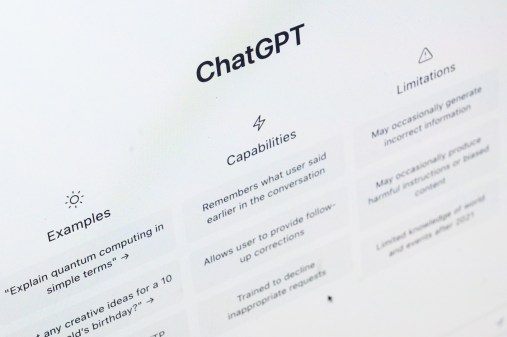Since the release of President Obama’s Open Government Initiative in late 2009, open data volumes have surged. But nearly five years later, open data advocates are saying it’s no longer enough to simply host the data — federal agencies now have to take the responsibility to ensure that citizens benefit from that reservoir of information.
Exploring the social impact of open data, Maureen Ohlhausen, a commissioner at the Federal Trade Commission, and a group of panelists spoke Wednesday at a Center for Data Innovation and Sunlight Foundation event about creating conditions so open data can be most successful.
There’s more information out there than anyone yet knows what to do with, but Ohlhausen said the data alone is not sufficient.
“Put more simply, there is a lot of data, it has many different forms, and it is created rapidly. Tools that can pull useful needles of insight from this data haystack have great potential to make our lives better,” she said. “Data alone is not knowledge, however. The promise is that big data techniques will help us extract knowledge from data, and this knowledge will help us better understand ourselves and the world around us.”
Referencing ways private companies like Netflix and Kaiser Permanente are leveraging an ever-deepening pool of consumer data and making it actionable for public service, the FTC commissioner said the federal government too can play a role in helping citizens and private entities benefit from open government data, rather than acting primarily as a consumer of that data.
“There is great potential in applying powerful new big data tools to the rich troves of government data,” Ohlhausen said. “The private sector could use the wide range of government-produced data to reveal new insights into difficult problems in nearly every area of human endeavor. In fact, McKinsey & Company has estimated that opening government data to private sector access has the global potential to create more than $3 trillion in additional value annually.”
The challenge then may not lie as much in driving awareness of big data and open data anymore, which has made its way around the world on the Internet to both developed and developing regions, but in discussing the benefits of open data with “people who haven’t yet drunk the Kool-Aid,” said Sunlight Foundation National Policy Manager Emily Shaw.
Contrary to what many preach, Shaw said it isn’t just about the data. “How do we make the best use of this public good? How do we ensure people are using it to the extent that they can to have the kind of impact we know is possible?” she asked. “I’m going to say by talking a lot, by connecting with each other. It’s not about the data, it’s about other things, particularly the willingness to speak about aspects of it that allow us to communicate further and develop more.”
Shaw’s advice on bringing in the public to participate as shareholders in the process paralleled much of what Ohlhausen is moving for the FTC to do in providing useful tools to private citizens. But to get there, the FTC commissioner said there are many obstacles the federal government, and particularly her agency, must address first.
“By embracing a realistic, informed view of big data’s potential, providing guidance on the privacy issues raised by open government data in the age of big data tools, and by promoting a culture that embraces open data and innovative data analysis, the FTC can serve an important role in ensuring that citizens benefit from the massive amounts of data produced by the government,” Ohlhausen said.
The panelists agreed data is there, open and available. But now, it’s up to organizations — whether they be federal agencies or nonprofits — to make that wealth of insights actionable.
Where the nation stands with the evolution of big data, according to Brian Rayburn, a data scientist with health data startup Symcat, is much like a baby when it opens its eyes for the first time.
“[T]hey have all these rods and cones receiving light and they don’t even perceive objects,” Rayburn said. “If you look at these data streams each as one of those rods and cones, then they have to develop all these processes to make better decisions than if they never had those rods and cones in the first place. I think that’s sort of where we are with data.”






